As an Amazon Associate I earn from qualifying purchases.
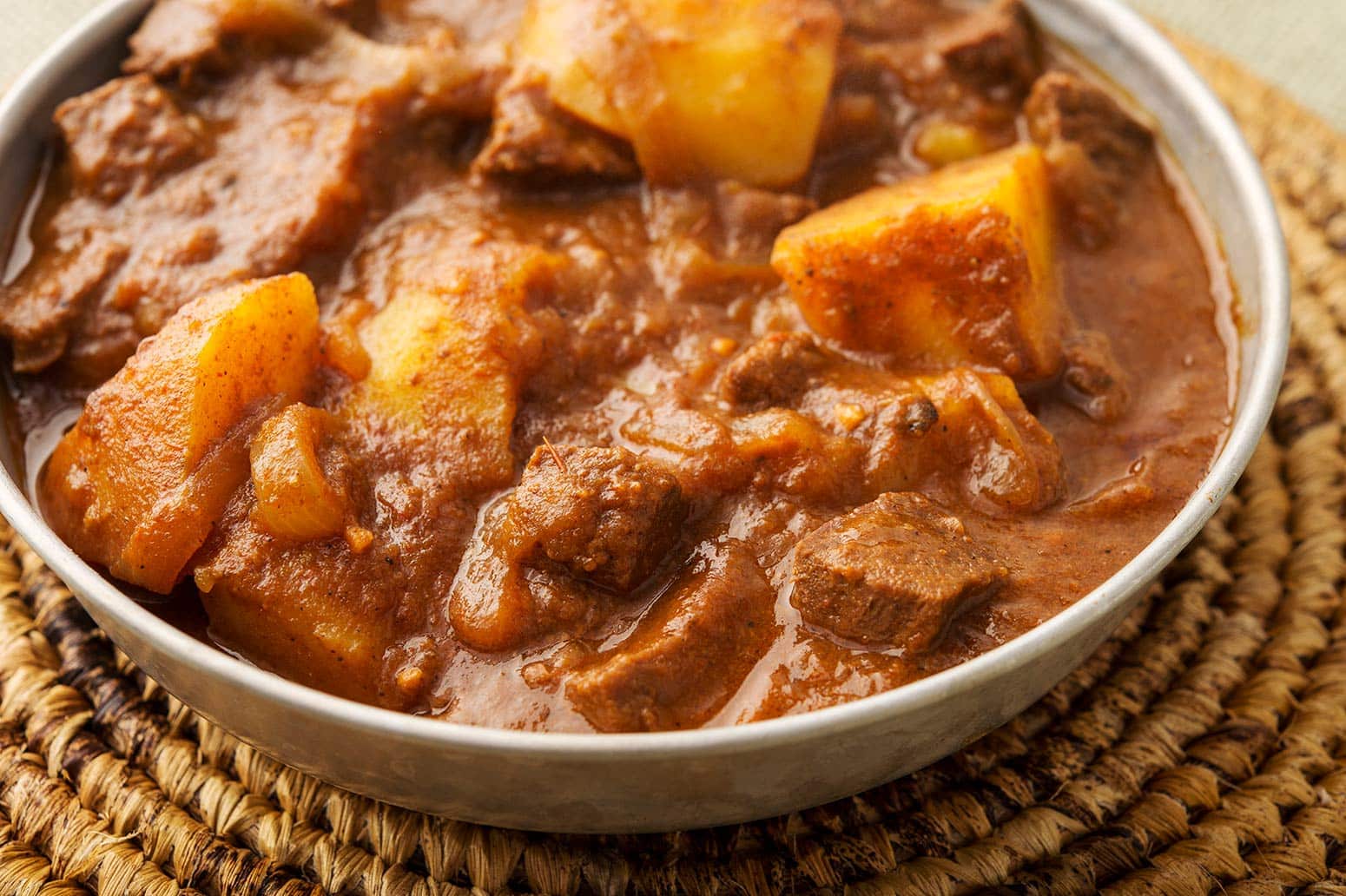
Meet abish wot, a classic, spicy Ethiopian beef stew that I make with venison. It is one of the dishes I used to make many years ago, when I worked at the Horn of Africa restaurant in Madison, Wisconsin.
There are many different beef stews in Ethiopia, as well as many others that feature lamb or goat. This one, abish wot, hinges on ground fenugreek. This spice is used heavily in East African and Indian cooking, as well as in Persia, too. It can be tricky to find unless you are in a large supermarket, but you can buy fenugreek online.
Fenugreek’s flavor is hard to describe, but there are elements of maple syrup and floral aromas going on. It is not only vital to this recipe, but, as it turns out, to all the cooking we did at Horn of Africa. (Here is an article on how to make a decent substitute for fenugreek.)
I’ve tried dozens of Ethiopian recipes over the years, and most lacked a certain something. They just weren’t “right,” at least as I remembered them at the restaurant. Fenugreek is the answer. My boss, the owner of the restaurant, was from Eritrea, which is now a separate country.
Ethiopia is a large country, with very different cooking styles from region to region. According to the excellent cookbook Ethiopia: Recipes and Traditions from the Horn of Africa, the cooking of Harrar focuses on fenugreek. It doesn’t mention Eritrea.

Regardless, this stew is a knockout. Heavily spiced — both “hot” spicy and exotic, Silk Road spicy — the venison and potatoes tender, the stew itself something you want to linger over. Normally this is served on Ethiopian injera, a sort of crepe-flatbread, but rice or any good bread will work well, too. You need something to mitigate the intensity of this stew.
Author Yohanis Gebreyesus has a recipe for abish wot in his book, but I cook this one the way we did at Horn of Africa. It uses the Ethiopian spiced butter niter kebbeh, as well as berbere. You can sub in clarified butter or ghee, but you need the berbere powder.
I have a recipe for the spiced butter here, and for berbere powder here. You can also buy berbere online. Cost Plus and Trader Joe’s tends to carry it, too.
So, yeah. To make this recipe taste the way it should, you do need to get your hands on these building blocks. The good news is that the berbere powder keeps for more than a year, and, once made, the spiced, clarified butter will also last a year if you tuck it away in the corner of the fridge. So it’s a long-term investment, one you will want to make.
If you are making this as an Ethiopian beef stew, use sirloin or chuck, and if you are using venison, goat or lamb, use the hind leg. In any case, dice the meat.
Abish wot keeps for a week or so in the fridge, and freezes well.
If you love Ethiopian food, consider two other favorites from the Horn of Africa: doro wat, a spicy stewed chicken dish, and alicha wot, a fenugreek-heavy stew made with beef, lamb, goat or venison.
Ethiopian Venison Stew
Ingredients
- 2 large onions, peeled and sliced thin root to tip
- 2 to 3 tablespoons niter kebbeh (spiced butter), or clarified butter
- 3 cloves garlic, sliced thin
- 1/2 teaspoon ground cumin
- 1 to 2 tablespoons berbere spice mix
- 1 to 2 tablespoons ground fenugreek
- 1 cup tomato puree
- 1 quart beef or venison broth
- 1 1/2 pounds diced venison, beef, lamb or goat
- 6 Yukon Gold potatoes, peeled and cut in chunks
- Salt
OPTIONAL MEKELESHA SPICE MIX
- 1 teaspoon ground cinnamon
- 1/4 teaspoon ground clove
- 1/2 teaspoon ground cardamom
- 1/2 teaspoon black or long pepper
Instructions
- If you are making the Mekelesha spice mix, mix them all together in a little bowl and set aside.
- Arrange the sliced onions in a large, lidded pot like a Dutch oven and turn the heat to medium. Sweat the onions, dry, until they are starting to brown and soft, about 10 minutes. You will need to stir them from time to time.
- When the onions are soft, add the spiced butter and the garlic and stir well. Let this cook another 4 to 6 minutes.
- Mix in the cumin, berbere, fenugreek and tomato and cook 3 minutes, stirring often. Add the diced venison.
- Pour in the broth, little by little, stirring to incorporate everything well. Bring to a simmer, add salt to taste, and cover. Let this cook gently for 1 hour.
- Add the potatoes, cover and cook another hour. When the venison and potatoes are tender, add the mekelesha spice, if using, adjust for salt and pepper and serve with bread or rice.
Nutrition
Nutrition information is automatically calculated, so should only be used as an approximation.
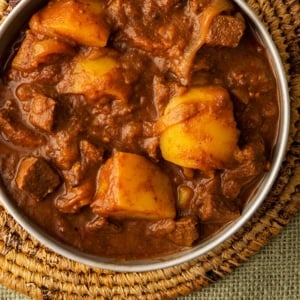
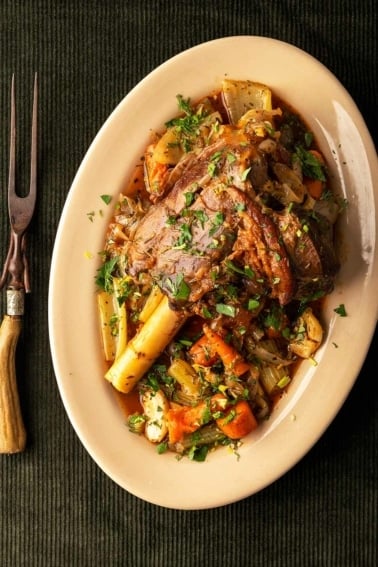
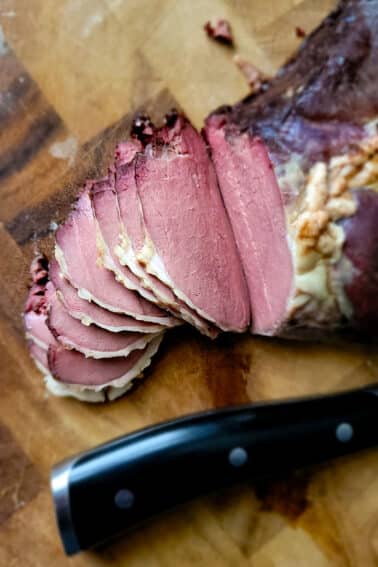
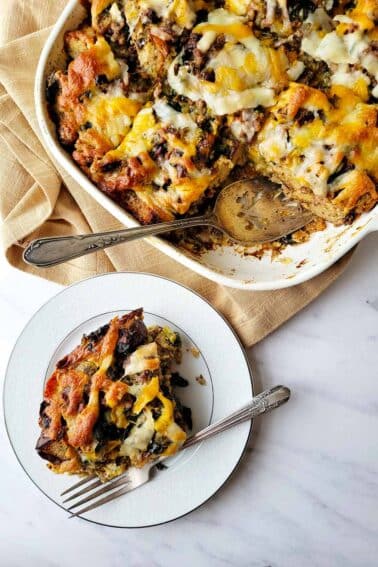
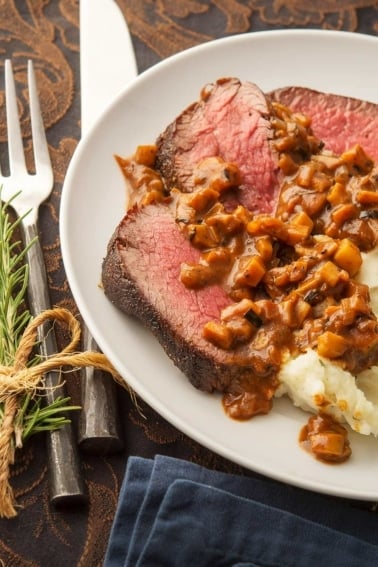
Hi – in the method you add the tomatoes but they aren’t mentioned in the ingredients. Can you let me know what type – fresh, tinned or pureed and how much/many. Probably fresh thinking about it. Thanks
Miranda: It’s there in the ingredients, and in Step 4.
Could I crock pot this recipe?
Would you be able to substitute chicken breast for this recipe and if so how would it affect cooking times? Thanks.
Lisa: I wouldn’t, but if you did, the meat would only cook about 20 minutes. So cook the rest of the stew meatless until the chicken goes in. It would be better with chicken thighs, which can be cooked longer.
This stew was excellent. It lasted me an entire week’s worth of lunches, and I never once got bored of it. I think if I made the spiced butter and used the mekelesha spice mix that it would be even better, and I will test that out in a week or two.
I did feel sorry that my co-workers had to be around that great smell. But not sorry enough that I stopped bringing it to work.
I was planning on making my usual venison stew with some bits I had trimmed from a roast while making rouladen this past weekend, when I got this recipe in the weekly newsletter. I decided to give it a try and am very glad I did! It was excellent, perfectly fragrant and warming for a cold winter evening and I managed to stretch the trim into a full meal. Now that I have some extra berbere, I’ll be seeking out additional Ethiopian recipes (next stop, Ethiopian Tibs from Buck Buck Moose)
I am an avid cook (and owner of your cookbooks!). I have both dried fenugreek leaves (green color) and whole fenugreek seeds (beige color). Is the ground fenugreek in your recipe from seeds or leaves? Thank you for this recipe. I plan to make some injera bread to eat with it!
Lissa: It’s from the seeds.
Made it last night and served it with rice, and it was phenomenal. If you decide to make it, definitely go source out all the special ingredients and make the spiced butter, it’s worth it. It does have some heat to it, but it is that really steady, low, slow type of heat that just warms you up and is perfect for these cold and dreary winter nights. I am excited for the leftovers tonight, we cooked the potatoes “al denté”, that way it will reheat nicely without making the stew overly starchy. I think giving it 24hrs to let the flavors meld, will be even more wonderful. Going to serve it tonight with some sort of roasted veggie and some high quality crusty bread.
One additional question – cardamom pods are harder to find in my area, a quick google search says 1.5 tsp of ground cardamom for 10 cardamom pods – does this sound like a reasonable substitute amount?
Mark: I think it’d be more like 1 tsp. You can always add more.
Will the venison be tender in a couple hours? Typically when I braise meats from the rear haunch, I’m looking at at least 3 hours. I understand you’re not braising here, just simmering, but I’d like to try this and be able to plan ahead.
Mark: Depends on the deer. Anywhere from 2 to 5 hours has been my experience.
Are you using green or black cardamom pods for the spice mixture?
Tks Mary
Mary: Either work, but I prefer green.